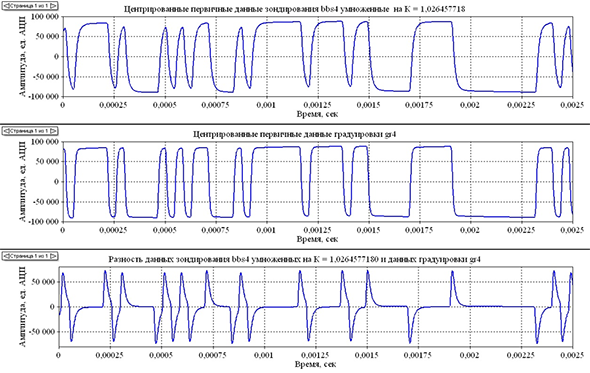10.09.2024
On August 15, 2024, a series of experiments were conducted in the Chunkurchak gorge to test the technology of electromagnetic monitoring of the earth's crust stress-strain state using experimental electrical exploration measuring complex with pseudonoise signals developed at the Laboratory of Advanced Hardware Development (LAHD).
The main objective of the experiments is to test the sounding frame with a long side equal to 100 m introduced into the equipment. Previously, experiments were conducted with a frame with a long side equal to 50 m. Experiments were conducted with both a 50x50 frame and a 100x100 meter frame. The data obtained will allow a comparative assessment of the effectiveness (increase in depth) of probing with an increase in the area of sounding frame.

The tests focused on the innovation in the equipment — enlarged 100*100 m probing frame, which allows expanding the range of controlled depths of the earth's crust. A series of tests were conducted in modes with a pseudonoise sequence of probing pulses and a number of probings with periodic sequences. A comparison of probing frames was conducted — 50 meter and 100 meter. The orientation of these frames to the cardinal points was preserved and repeated the previously conducted measurements at separate point.


12.10.2021
Geodynamic processes occurring in active regions of the planet are manifested in various geophysical fields. The task of monitoring the processes of cracking is urgent, and the successful separation of the magnetotelluric field into endogenous and exogenous components allows us to detect the moment of activation of cracking. The solution of the problem of locating the activated volume is possible with the help of a three-component gradient installation for recording the seismoacoustic field near the day surface.
/%D0%A0%D0%B8%D1%81%D1%83%D0%BD%D0%BE%D0%BA1.png)
Layout of three-component geophones.
The XY plane corresponds to the day surface.
▼ - three-component geophones
A multichannel (21 channels) system has been developed to record seismic-acoustic signals from a three-component gradient setup, which provides continuous synchronous recording of seismic signals with a duration of up to three days.
/%D0%A0%D0%B8%D1%81%D1%83%D0%BD%D0%BE%D0%BA2.png)
Structural and functional diagram of the gradient seismic recording installation.
БСД - seismic sensor unit; СД - Seismic sensor; БПУС - block of preliminary amplification of signals; ПУ - preamplifier; ФНЧ - low-frequency filter; БСС - signal connection block; АЦП - analog-to-digital converter module; БА - battery pack; ПК - external personal computer
/%D0%A0%D0%B8%D1%81%D1%83%D0%BD%D0%BE%D0%BA3.png)
External view of the three-geophone
/%D0%A0%D0%B8%D1%81%D1%83%D0%BD%D0%BE%D0%BA4.png)
External view of the signal registration unit.
1-ADC block, 2-signal connection block.
A portable PC is used as a recorder and information storage device. The connection between the PC and the ADC unit is made with a UTP-5 network cable (length 50 m). Data transmission is carried out via the Ethernet protocol. The unit is powered by 3 batteries. The maximum current consumption on each of the supplying batteries is 0.5 A.
In August 2021, together with the field team of the LDMS (Laboratory of Deep Magnetotelluric Studies), field tests of the developed seismic recording unit were carried out. To check the operation of the installation and record seismoacoustic signals, point Ukok-2 was chosen, located near the Ukok gorge of the Naryn region. The sensors were buried in the ground and additionally rammed for better mechanical contact.
/%D0%A0%D0%B8%D1%81%D1%83%D0%BD%D0%BE%D0%BA5.png)
Preparing equipment for installation.
/%D0%A0%D0%B8%D1%81%D1%83%D0%BD%D0%BE%D0%BA6.png)
Burying the sensors.
For registration and preprocessing of signals obtained with the help of a gradient seismic recording installation, a laptop and special software, also developed at the LAHD, were used.
/%D0%A0%D0%B8%D1%81%D1%83%D0%BD%D0%BE%D0%BA7.png)
Viewing and preliminary processing of experimental data in the field is carried out by the ExpDataProc_x64.exe program.
During the period from August 26 to September 7, 2021, when the installation was in operation, a large amount of data was obtained, which will be used for further research.
1.10.2020
In accordance with the research plan (topic code FMNN-2019-0004, state registration number AAAA-A19-119020190065-6), LAHD continued work on the creation of a modern hardware and software measuring complex for conducting electromagnetic sounding of the earth's crust using the TEM method using pseudonoise sounding signals.
In September this year, LAHD employees carried out a series of field experiments with a manufactured experimental sample of the measuring complex. The main tasks solved in the process of experimental work are further development of the technology for conducting field measurements, improvement and debugging of algorithms and software for data processing. The goal is to obtain high-quality curves of the field formation in a wide dynamic (≥ 150 dB) and frequency (0.2 ÷ 40,000 Hz) ranges of recorded signals. Field experiments were carried out at the near test point "Polygon, MGD".
.jpg)
Five measurement sessions were performed, each of which consisted of two stages. At the first stage, the responses of the earth's crust to the impact in the form of pulsed M-sequences of the magnetic flux created in the earth's crust by the current flowing in the induction probe frame were recorded. At the second stage, the measuring channel was calibrated using the same shape as when probing the M-sequences of current pulses, but supplied to the graduation coil of the induction sensor.
When processing the sounding and calibration data, the difference between the recorded sounding and calibration signals was calculated. Further, the correlation processing of the difference signal with an ideal single probe M-sequence was carried out.
The use of the new technology for field measurements and data processing made it possible to exclude the direct field recorded by the induction sensor through the upper half-space (air). Only the response of the earth to the probing action that passed through the measuring channel was taken into account.







